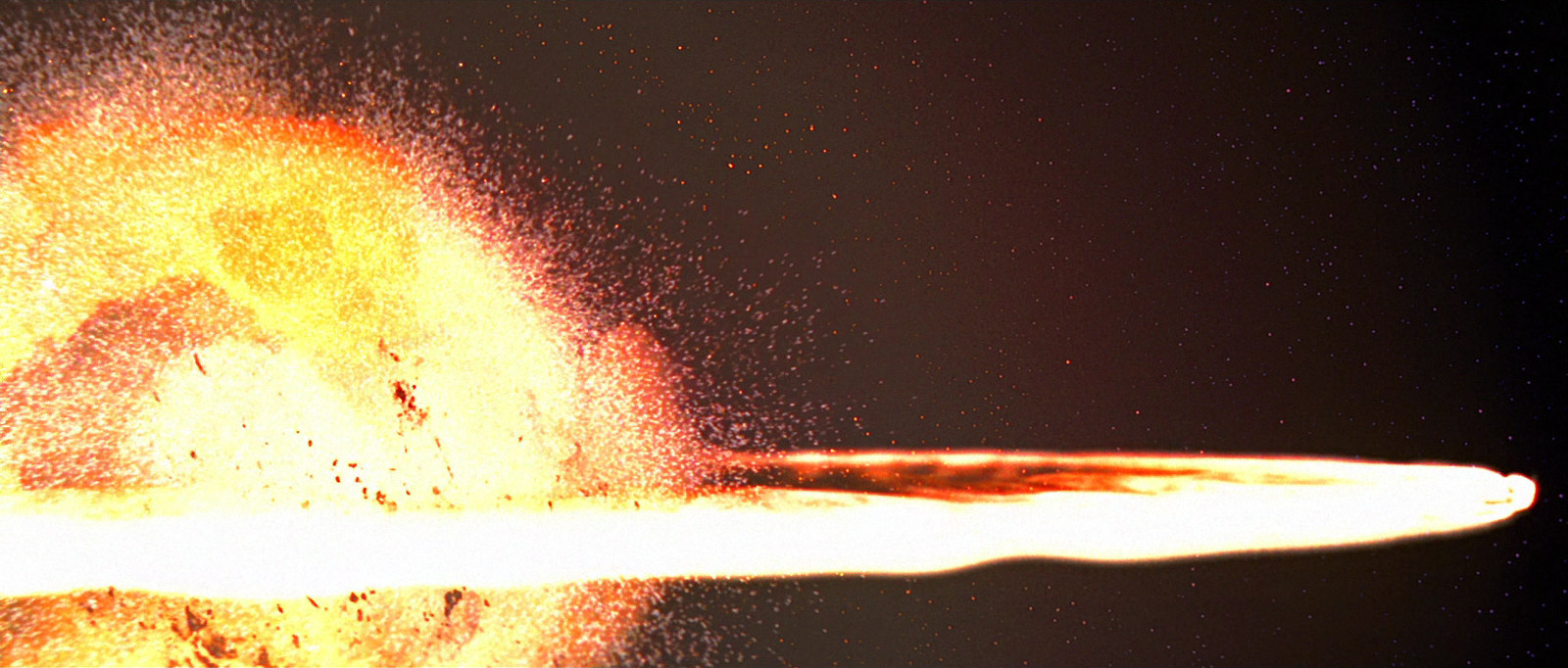With what could become the highest-earning movie in history hitting cinema screens this weekend, the Force may be with Disney in the short term. But the fully operational Death Star of expensive sports rights is getting ready to destroy the company's impressive profits, one analyst says.
Massive investments in sports rights — like the $15.2 billion the Disney-owned ESPN paid for 10 more years of NFL rights in 2011 — could drag the company down, BTIG analyst Rich Greenfield argued in a note Friday, even as its ability to churn out massively popular movies, TV shows, toys, and theme park rides has never been stronger.
Greenfield said he expected Disney earnings to be lower than other analysts expect for 2017 and 2018, calling their estimates for those years "too high" and "far too high" respectively. His price target for Disney shares is now $90, about 17% below the $108 it was trading at on Friday.
After the release of Star Wars: The Force Awakens Thursday, Wall Street joined the throngs of fans in cheering the film, even if the bankers were more interested in the dollar signs than the lightsabers.
"The Force is Strong Here...and Lucrative," Nomura analysts wrote after seeing the movie, predicting it could pull in $3 billion in box office receipts all over the world. Box Office Mojo reported that the Thursday screenings set a record for early showings, with $57 million on opening night.
Star Wars maker Lucasfilm, which Disney acquired in late 2012, fits well into the company's "cross-division monetization engine," Nomura said, using a very Darth Vader turn of phrase. With "at least" five Star Wars movies coming through 2019, the Nomura analysts are "optimistic Disney can propel sustained cross-segment synergies going forward."
Frozen, Disney's last film-toy-music cross-promotional gold mine, had a worldwide box office gross of $1.3 billion. Nomura said that revenue from Star Wars consumer products could be as high as $930 million, while Frozen generated some $700 million in revenue for consumer products.
That's a lot of money for toys and T-shirts, but Star Wars is a money machine even without new movies: Nomura estimates that $260 million of Disney's $4 billion in consumer products revenue in 2014 came from Star Wars.
But a force more powerful than any blockbuster looms over Disney. Overall, 44% of the company's operating profit comes from cable television, and people are cutting their cords and switching to streaming their entertainment faster than anybody expected.
Even with the Star Wars franchise kicking into high gear again, Disney's operating income is expected to be flat in the 2017 fiscal year thanks to cable income going down. Industry watchers have predicted that The Force Awakens could earn $2.6 billion in box office revenue, which Disney needs to meet Wall Street targets.
"If Star Wars Episode VII does not exceed $2.0 billion in worldwide box office revenue, Disney will miss our FY2016 and consensus earnings estimates as well," Greenfield said.
Disney stock closed down almost 4% Friday, despite the record-setting Star Wars box office and critical acclaim for the film.
Another problem for Disney, Greenfield argued, is that it has been eagerly providing its content to online streaming services. This has propped up its revenues in the short term, but those well-stocked streaming options have made it much easier for consumers to get rid of their cable packages, or migrate to less expensive ones that may not include the full suite of Disney channels
"As more great content from Disney and others flow onto [streaming] platforms, more time shifts away from live, linear TV, accelerating ratings declines and in turn, advertising revenues," Greenfield wrote last month.
Disney CEO Bob Iger blamed some of the cord-cutting on "economic factors," but he did note that "young people are not signing up as quickly as they once did."
Or, as Obi-Wan Kenobi put it when Alderaan was destroyed by the Empire, "I felt a great disturbance in the Force, as if millions of voices suddenly cried out in terror and were suddenly silenced. I fear something terrible has happened."

Alderaan will never recover, but investors and analysts are more optimistic about Disney's prospects. While entertainment and cable TV companies have had a bad 2015 — motivated in large part by the looming threat of cable cutting — Disney shares have been on a relative tear, rising about 15% so far this year. Viacom shares are down 47% for the year, 21st Century Fox is down 25%, and Discovery Communications is down 24%.
Greenfield attributes this bout of investor optimism to excitement about Star Wars and how a movie that doesn't suck as badly as The Phantom Menace could ramp up Disney's business.
In a regulatory filing, Nomura analysts noted, Disney said it was expanding its Hollywood Studios for more Star Wars space and building a "Star Wars-themed land" at the Disneyland resort. In the last year, attendance at the parks grew 5% and revenue grew 7%.
Early this year, the Wall Street Journal quoted another analyst arguing that Disney's ability to consistently milk profits from its valuable intellectual property (think Marvel, Star Wars, and Pixar) made it more like a branded consumer products company like Nike, rather than other movie or TV studios.
Investors tend to place a higher value on consumer branded products because their sales are more predictable, unlike the ups and downs of entertainment (people will buy Nike shoes every year, but if Paramount's movies are bad, people will desert them in a flash). Nike's shares, for instance, are valued at about 33 times last year's earnings, while Disney's trade at about 21 times, and Fox's trade at 7 times.
But things may not go as well as planned.
Regardless of its Jedi-driven revenues, "Disney is a cable network company that has the highest level of fixed costs (sports rights) in the industry," Greenfield warned.
And those fixed costs have pushed ESPN to control its variable costs, which means, in many cases, firing people. The company recently laid off 300 employees and parted ways with high-profile, expensive talent like Keith Olbermann and Bill Simmons. Nielsen data shows that ESPN lost 3.2 million subscribers in 2015 — even as it invested in hugely expensive sports rights packages. Its NBA deal went from costing $485 million a year to $1.47 billion a year.
The NBA deal, Greenfield says, will make ESPN's cost structure "notably higher" in 2017 and will reduce operating profit from its cable network in 2017 and have it grow slowly in 2018.
Nomura analysts argue that Disney's cable business is stronger than Nielsen's subscriber data may show — they point out that ESPN has gained some subscriptions from "skinny" bundles of cable channels, like Dish Network's Sling TV service.
In a conference call with analysts in November, Disney chief Bob Iger said the company is "seizing the opportunity to basically distribute our content with these new entrants," including "smaller bundles," which he said are "attractive to young people."

